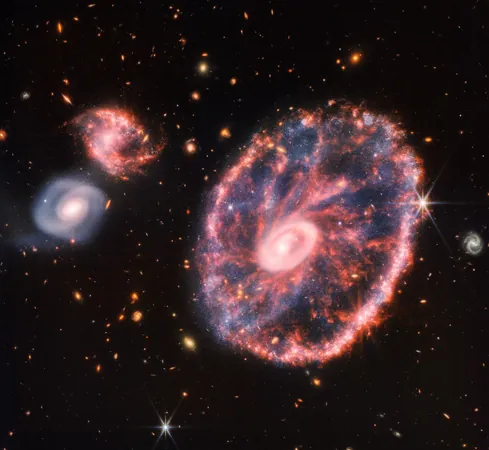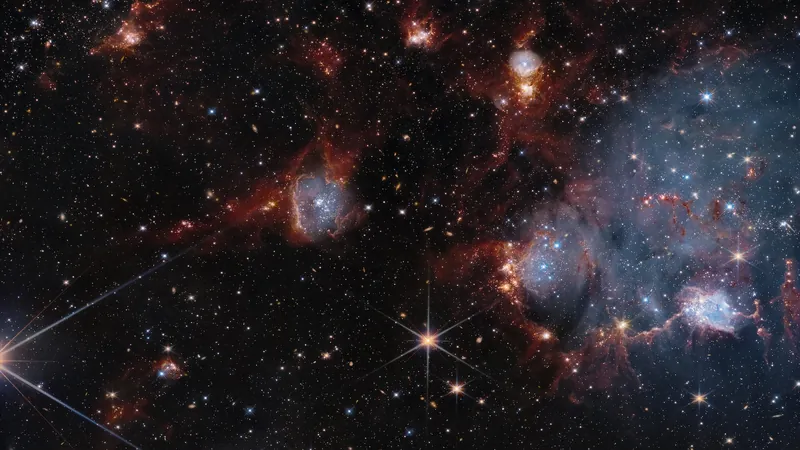
Unlocking the Secrets of Exoplanet Atmospheres with POSEIDON
2025-05-19
Author: Jacob
Revolutionizing Exoplanet Studies
The era of high-resolution spectroscopy (R > 25,000) has transformed our capabilities to explore exoplanet atmospheres right from Earth. With the ability to dissect individual lines in planetary emissions and transmission spectra, scientists are now equipped to intricately examine the chemical makeup and thermal dynamics of distant worlds.
Introducing POSEIDON: The Future of Atmospheric Retrievals
However, until now, one major hurdle has stood in the way of accurate atmospheric analyses—an absence of accessible, open-source codes for high-resolution retrievals. Enter POSEIDON, a cutting-edge retrieval framework that addresses this gap. Available to all researchers, POSEIDON allows users to conduct emission and transmission spectroscopy efficiently without needing high-end GPU systems.
Speed and Accessibility: A Game Changer for Researchers
Impressively fast, POSEIDON typically completes analyses in under 12 hours, making it a practical choice for scientists. Its user-friendly documentation, presented through Python notebooks, ensures that researchers can adopt this tool seamlessly.
Validation Through Real-World Applications
To validate POSEIDON's effectiveness, the team behind it successfully reproduced existing studies on the hot Jupiter WASP-77Ab and the ultra-hot Jupiter WASP-121b. Their findings align closely with previous research, provided the same data processing assumptions are used.
The Importance of Choices in Data Retrieval
What’s compelling about their results is the team's evidence that minor user choices can significantly influence the retrieved chemical abundances. This highlights the importance of careful decision-making in data analysis, ensuring that researchers can achieve consistent and reproducible results.
Join the New Frontier?
As researchers like Ruizhe Wang, Ryan J. MacDonald, Neale P. Gibson, and Nikole K. Lewis venture into this new frontier, the advent of POSEIDON promises a collaborative and open approach to exoplanet atmospheric research. This framework isn't just a tool; it’s an invitation for scientists worldwide to delve deeper into the mysteries of distant worlds, potentially uncovering new insights into their compositions and structures.









 Brasil (PT)
Brasil (PT)
 Canada (EN)
Canada (EN)
 Chile (ES)
Chile (ES)
 Česko (CS)
Česko (CS)
 대한민국 (KO)
대한민국 (KO)
 España (ES)
España (ES)
 France (FR)
France (FR)
 Hong Kong (EN)
Hong Kong (EN)
 Italia (IT)
Italia (IT)
 日本 (JA)
日本 (JA)
 Magyarország (HU)
Magyarország (HU)
 Norge (NO)
Norge (NO)
 Polska (PL)
Polska (PL)
 Schweiz (DE)
Schweiz (DE)
 Singapore (EN)
Singapore (EN)
 Sverige (SV)
Sverige (SV)
 Suomi (FI)
Suomi (FI)
 Türkiye (TR)
Türkiye (TR)
 الإمارات العربية المتحدة (AR)
الإمارات العربية المتحدة (AR)